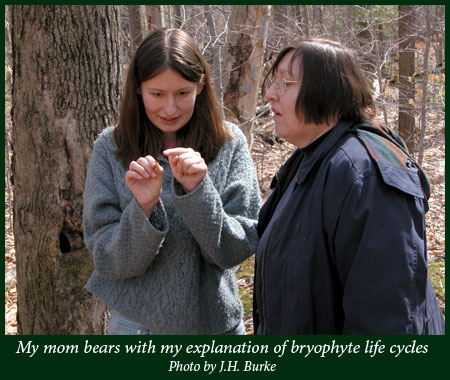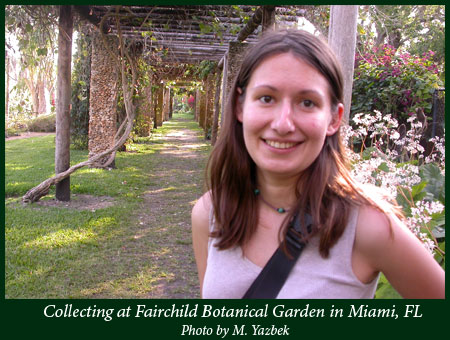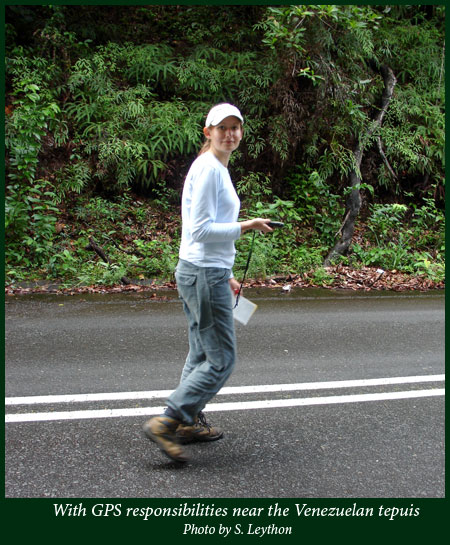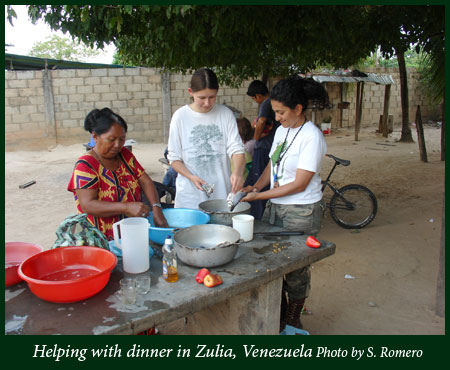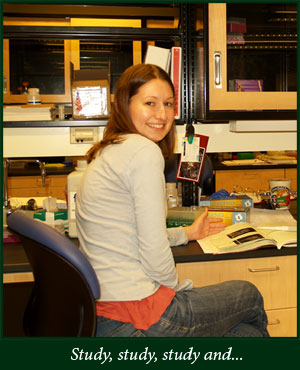
MY BOTANICAL STORY (so far)
What I really wanted after high school was an internship at the Brookfield zoo. My initial interests were in the biology of cute, cuddly mammals. Instead a friend helped me find a job in the herbarium of the Morton Arboretum, where he was a volunteer. While I had hiked around the woods often as a kid, and knew many local wildflowers, I never imagined myself becoming interested in the flora instead of the fauna.

My internship involved collecting, identifying and documenting the plants growing spontaneously on the arboretum grounds. I quickly grew interested in the plants I collected and later that summer I entered college with hundreds of Latin binomials in my head. Even though my curriculum in my undergraduate degree was focused on general biology, I managed to expand my field work with plants every summer. I returned to the Morton Arboretum the following summer, and traveled to the Southeast United States to collect plants under a National Cancer Institute research grant.
By this time my interest in field botany was solidified, and I wanted to expand my experience to new regions. My first trip to the tropics was during a short, intensive undergraduate course to Ecuador and the Galapagos Islands. Landing in Quito, I had my first experience in a non-English speaking country. One propeller plane, motorized canoe, and dug-out canoe trip later, I was at an ecotourist site on an Amazon River tributary in Quechua territory. My excitement overwhelmed my sleep deprivation during this whirlwind trip, I absorbed the new information our guide taught us and the richness, complexity and beauty of the new world tropics. None of my trips to Latin America since then have topped my awe on this first trip.
The following year, I enrolled in a study abroad program to spend a semester in Costa Rica. This program was mostly focused on tropical biology and ecology. I gained a lot of general knowledge about the tropics, and discove

red how diverse a small country can be. I also discovered how quickly that diversity can disappear, and realized there is a real need for taxonomists out in the field to continue to help understand the world around us.

My work locally in the United States, during and after my undergraduate degree, piqued my interest in invasive species and weeds. I worked for the City of Baltimore as a coordinator of the Urban Weed Warriors program. Yes, that cheesy title meant I trained volunteers to battle weeds in the city parks. I applied to graduate school knowing I would like to spend time collecting plants in the tropics, making hypotheses of evolutio
nary relationships, and investigating traits of a particular invasive species.
Research
I am currently a Ph.D. candidate in the systematic biology graduate program through the L.H. Bailey Hortorium at Cornell University. Here, I am able to develop my thesis topic at the interface of two disciplines: systematics and invasive biology, with field trips to the New World tropics to boot. The primary focus of my thesis is on the genus Antigonon in the Polygonaceae. This genus consists of vines native to Central America and contains between 2-6 species, however species delimitations are unclear, and the genus is in need of a taxonomic revision. All species are brilliant in flower, but one species, Antigonon leptopus, has been cultivated across the tropics. Through this cultivation, A. leptopus has been dispersed, and has successfully colonized many localities. Antigonon leptopus is now a weed throughout the tropics, and can become a threat to native vegetation, especially on island habitats.
The systematic aspect of my work will involve collecting specimens of Antigonon species across their native range, delimiting the species, and reconstructing a phylogeny of the genus. The ecological aspect of my work seeks to identify which entity is invasive. Do most individuals in the species have the same invasive potential, or is there one invasive variety that has been introduced? I hope to elucidate traits that confer invasiveness through sister group comparisons using a robust phylogeny, and through comparative population work that examines native and invasive populations.

So far my graduate research has taken me to Venezuela and Mexico. I still plan to visit the eastern and western edges of Mexico, and St. Eustatius (a small island in the Caribbean) where A. leptopus is invasive. I also have had the opportunity to teach many courses at Cornell including: Introductory Botany, Taxonomy of Cultivated Plants, and Plant Evolution and the Fossil Record. Between teaching lab courses and conducting research, my graduate career has given me the opportunity to work with plants and students everyday.
I have not yet decided how much of my career will be focused onto the study of invasive species biology and their management, but I know that I would like to continue research in the new world tropics, and collect and identify plants in biologically rich areas.








